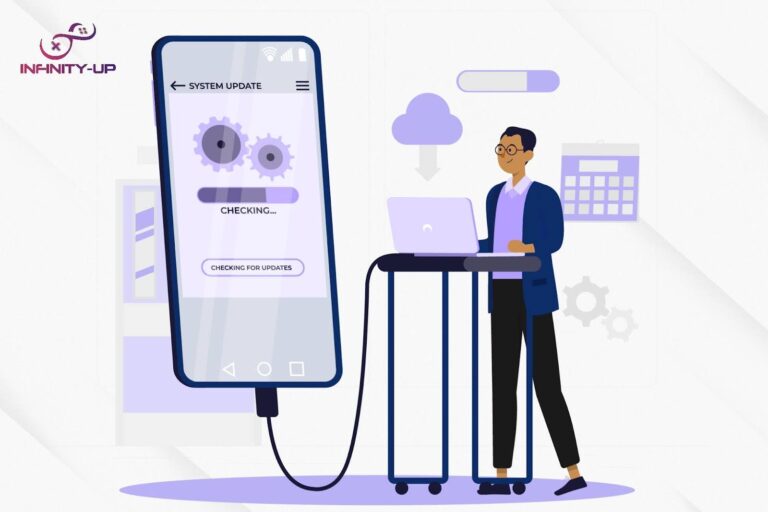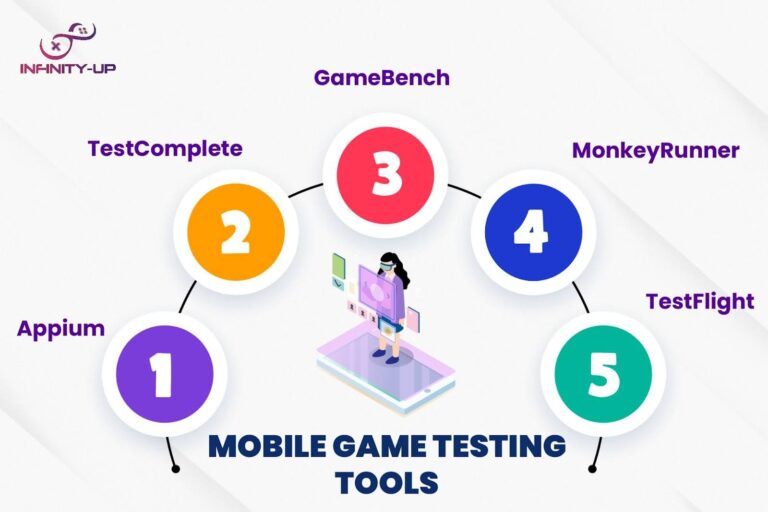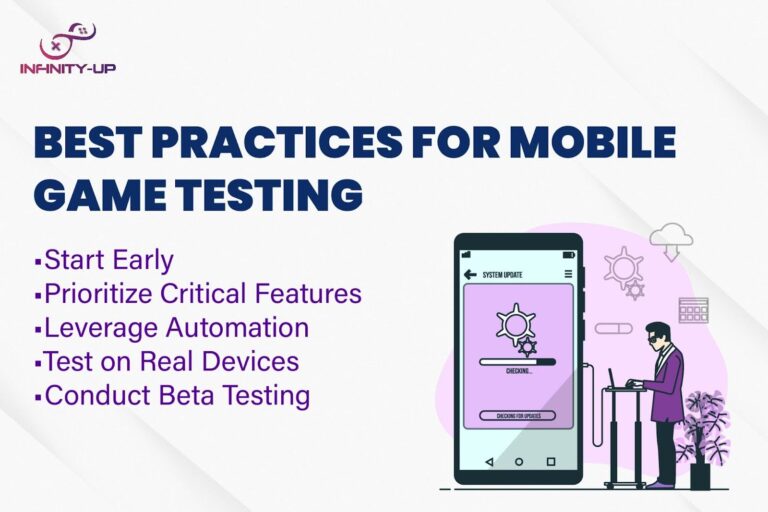Mobile Game Testing: Tips and Best Practices
Mobile Game Testing: Tips and Best Practices
Game testing is crucial for ensuring a successful, bug-free launch. It verifies that features, achievement, stability, and systems like payments work seamlessly. Let’s explore best practices for effective mobile game testing.

What is mobile gaming testing & why it’s important
Mobile game testing ensures smooth gameplay, user-friendly controls, quality graphics, and secure data handling. Addressing bugs, achievement, and compatibility issues, helps developers deliver enjoyable experiences and succeed in a competitive market. Here are the key reasons why it’s essential.
- Diverse Devices and Platforms
- User Experience
- Achievement Optimization
- App Store Compliance
- Monetization and Retention
Mobile game testing ensures seamless gameplay, intuitive controls, and bug-free performance across various devices. It enhances the user experience, optimizes achievements, and ensures compliance with app store guidelines. Experience the thrill of Galactic Peggle-Ball Breaker, available on Android and iOS, and see how thorough testing improves monetization and player retention, driving a game’s success.
Leveling Up Your Mobile Game: The Power of Testing
Functionality Testing:
Ensures that the game operates as intended, with no critical bugs or errors.
Compatibility Testing:
Verifies the game’s achievement across various devices, operating systems, and screen resolutions.
Performance Testing:
Measures the game’s responsiveness, stability, and resource usage under different conditions.
Usability Testing:
Focuses on the player experience, identifying areas that may confuse or frustrate users.
Multiplayer Testing:
Ensures a seamless experience for online multiplayer features, including connectivity and matchmaking.
Localization Testing:
Checks the accuracy of translations and cultural appropriateness for games distributed in multiple regions.
Security Testing:
Protects the game from cheating, hacking, and unauthorized access to player data.
By conducting these types of testing, developers can identify and fix issues early in the development process, resulting in a higher-quality game that meets player expectations.
Tools for Mobile Game Testing
Appium:
An open-source testing framework for automating mobile app testing.
TestComplete:
A comprehensive tool for automated testing of mobile applications.
GameBench:
Used for achievement testing, including FPS, CPU, and battery usage.
MonkeyRunner:
A tool from Android for running automated tests on real devices.
TestFlight:
Apple’s platform for beta testing iOS apps.

Key Challenges in Mobile Game Testing with Gamification
Mobile game testing, especially with gamification, involves unique challenges. Device fragmentation complicates testing across varied devices, screen sizes, and operating systems. Frequent updates demand ongoing testing to maintain functionality, while network variability requires games to perform smoothly under unstable conditions. Real-world scenarios, like interruptions from calls, add complexity.
Gamified features must be optimized for achievement, enhance engagement, and ensure data security. Proper testing guarantees a seamless user experience, boosting retention and success. Explore how Gamification is revolutionizing industries like education.
Best Practices for Mobile Game Testing
1. Start Early:
Begin testing during the development phase to identify and address issues early.
2. Prioritize Critical Features:
Focus on core gameplay mechanics, UI/UX, and monetization features.
3. Leverage Automation:
Use automated tools for repetitive tests, but don’t neglect manual testing for nuanced user experience checks.
4. Test on Real Devices:
Emulators are helpful, but real devices provide the most accurate results.
5. Conduct Beta Testing:
Involve real players to gather feedback and identify issues that might have been overlooked.

Tips for Effective Mobile Game Testing with INFINITY-UP
The rapidly growing mobile gaming industry demands thorough testing before release. At INFINITY-UP, we specialize in full-stack game development, ensuring games are tested across diverse devices to resolve achievement and compatibility issues. By engaging beta testers, we uncover hidden bugs and refine gameplay. Our user-focused testing approach ensures games are functional, enjoyable, and aligned with audience expectations. Choose INFINITY-UP to develop exceptional games and stand out in the competitive mobile gaming industry.
Conclusion
Mobile game testing is essential for creating high-quality games that stand out in a competitive market. By addressing achievement, compatibility, and security, testing enhances user experience and minimizes risks. Leveraging effective tools and strategies for pre and post-launch testing ensures your game meets market demands. With proper planning, execution, and dedication to quality, development teams can deliver exceptional results and drive success in the mobile gaming industry.
Request a free quote from INFINITY-UP today!
FAQ
Q1: What are some essential testing tools for mobile games?
A: Essential testing tools for mobile games include Appium and TestComplete for automated testing, GameBench for performance monitoring, and TestFlight or Firebase for beta testing. Tools like Charles Proxy are also vital for network debugging, ensuring smooth online functionality.
Q2: How can I optimize game performance on different devices?
A: Optimize performance by testing on diverse devices and adjusting graphics, resolution, and resource usage. Use GameBench to monitor CPU, GPU, and memory.
Q3: What are the key areas to focus on during mobile game testing?
A: Focus on functionality, usability, performance, compatibility, localization, security, and regression testing.
Q4: When should mobile game testing begin?
A: Testing should begin early in development (alpha stage).
Continuous testing throughout development ensures higher quality and fewer bugs at launch.
Q5: What are some common challenges in mobile game testing?
A: Fragmentation of devices and operating systems.
Frequent OS updates that may impact functionality.
Balancing testing coverage with project timelines.

